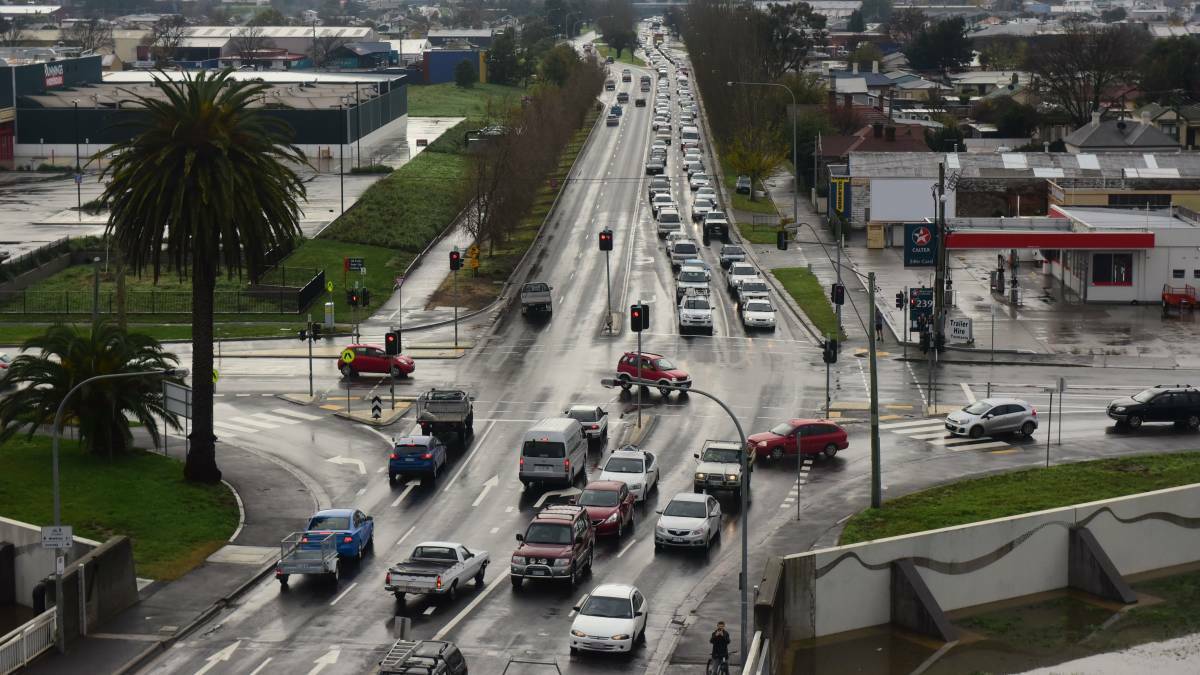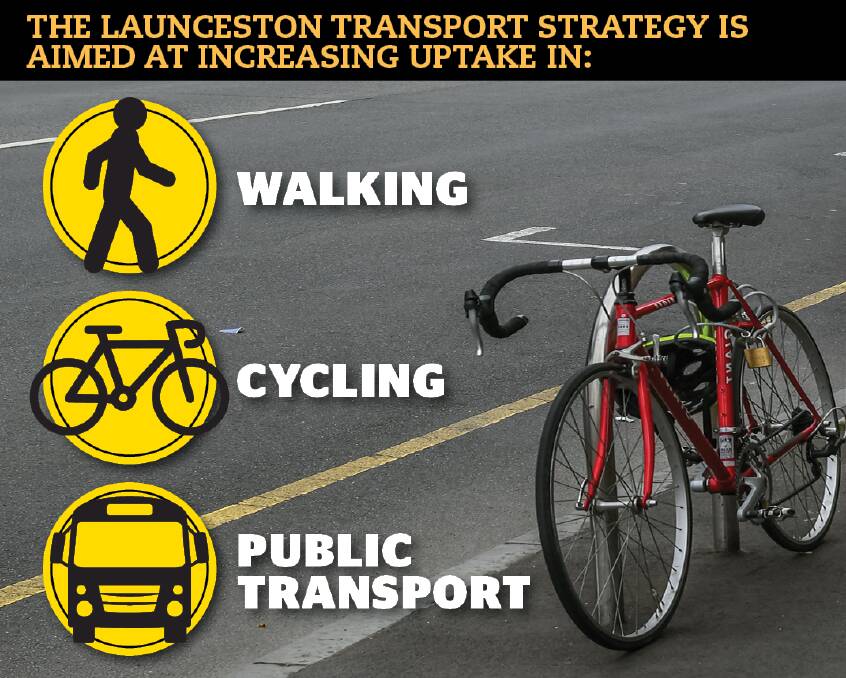
The daily commute in Launceston is set to change in the coming years, after the public were urged to reconsider their preferred mode of transport.
Subscribe now for unlimited access.
$0/
(min cost $0)
or signup to continue reading
Multiple strategies aimed at encouraging more active and public transport, in the hope of making Launceston a more liveable city, were finalised last month after a 38-day community consultation period earlier this year.
The area's reliance on cars was cited by the City of Launceston council as a key challenge, due to the mode of transport's inefficiency in terms of space, as well as its unsustainability, and non-inclusivity.
READ MORE: Woman changes plea on drug driving charge
According to the Tasmanian government's online statistics, the number of vehicles registered in the Launceston municipality in the past decade has increased by more than 13,000.
This means the city now accounts for 12 per cent of all registrations in the state and has more overall than any other local government area in Tasmania.
About 75 per cent of Launceston's workers prefer to drive or travel as a car passenger to work, a number that is not inclusive of those commuting into the city from regional areas every day.

These numbers, paired alongside a projected four to 13.5 per cent growth for the Launceston Local Government Area's population over the next 20 years, means the city's prevalent road-related issues could worsen rapidly.
The City of Launceston's newly endorsed and adapted Launceston Transport Strategy was created to tackle this issue years in advance.
The long-term transport vision is aimed at increasing active and public transport uptakes, reducing casualties on the road and ensuring quick access to resource amenities, through short, medium and long-term initiatives. Mayor Albert van Zetten said the implementation of the initiatives within the strategy could not only potentially help ease traffic congestion in the CBD, but also address the council's commitment to reducing greenhouse gas emissions.
"This isn't going to be easy ... It will be a very long and challenging process involving a wide range of stakeholders ... but the end result will be a Launceston that is more liveable, more healthy, and more connected," he said.
Infrastructure and assets general manager Shane Eberhardt said the progress the strategy intended to create would not necessarily come at the expense of people owning private vehicles, but would instead create other options for people.
We know cars are a part of our future in Launceston and that people won't move away from them any time soon, but we want to start making other modes of transport more attractive.
- Mayor Albert van Zetten
"There's going to be a lot of change over the next couple of decades, we don't exactly know what that change will be, but there's lots of expectation around what we'll do to support it ... so this strategy helps to narrows down those areas a bit more."
The strategy focused on three alternative modes of transport that council is encouraging citizens to consider using more frequently, depending on where they live.
Walking
Launceston's heritage-listed gardens, unique architecture and natural beauty are all features of the city that offer citizens further incentive to favour walking over driving. Additionally, 30 minutes of walking per day can increase cardiovascular fitness, strengthen bones, reduce excess body fat, and boost muscle power and endurance.
Although 80 per cent of respondents in as part of the Tomorrow Together council engagement program indicated that they walked daily or weekly to get around Launceston, results seemed to indicate otherwise, with only seven per cent of residents currently commuting by walking, despite 20 per cent of Launceston's residents travelling less than 2.5 kilometres to work.
Long wait times at pedestrian crossings, the often uneven surface of footpaths, and lack of lighting are all factors that have been identified by council as potentially contributing to the slow uptake in this particular mode of transport.
Cycling
The benefits of bicycles have been discussed at length; they improve health, ease congestion, save money, use less space, and provide efficient transportation with zero fuel consumption or carbon emissions.
It's clear that each of these factors can have an enormous positive impact on the overall wellbeing of a city.
However, while the Launceston community loves cycling for leisure, they have yet to fully adopt it as a mode of transport, even with most of the city's activity centres, health, and education facilities being within a 15-minute bike ride away from the CBD.
The area's high traffic volumes, hilly terrain, and limited dedicated cycling infrastructure, are all potential reasons for the community's reluctance to take up cycling.
According to the City of Launceston council, the transport strategy is aiming to make cycling more attractive by improving infrastructure, making cycling provisions part of new development and redevelopment projects, creating connections to centres and feeder routes, as well as providing more training for adults and students.
Residents of Norwood, Kings Meadows, Summerhill, and Mowbray, have all been encouraged to increase their uptake in this healthy mode of transport, as they have the highest level of cycling accessibility in the area.
Public transport
With one full bus able to take more than 50 cars off the road, it is at least twice as energy efficient as private cars.
However, Launceston's Metro bus patronage has stagnated in recent years, with the number of recorded trips decreasing by 50 per cent from 2015 to 2018.
Almost half of the respondents to the City of Launceston council's engagement campaign rated the reliability of buses in the area as either somewhat or completely unsatisfactory, with 72 per cent saying they hadn't caught one in the past year.
In January, last year, the Department of State Growth and Metro collaborated to combat this issue by introducing a new Launceston Metro Network, aimed at boosting bus use by improving on the previous network's complexity and limited service.
Simplified routes, increased frequency, a longer span of bus operating hours, and a fully-accessible bus fleet were among the project's key developments.
Those improvements could further be complemented after the implementation of Metro's $45 million Accelerated Bus Replacement Program across the state, which Tasmania's Minister for Infrastructure and Transport, Michael Ferguson, said means Metro Tasmania now has one of the youngest fleets in Australia, at an average of 8.1 years.
"Metro is now looking to the future with a zero-emissions bus trial," he said.
The City of Launceston council has also proposed relocating bus stops along St John Street to a new bus interchange on Paterson Street, to improve users' experiences and potentially increase public transport use.



